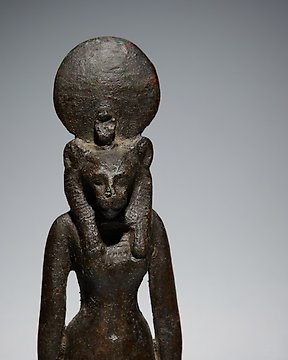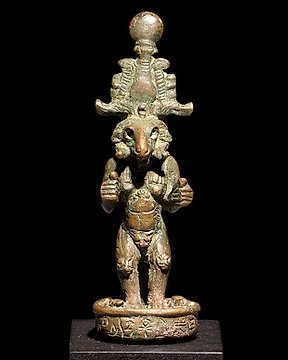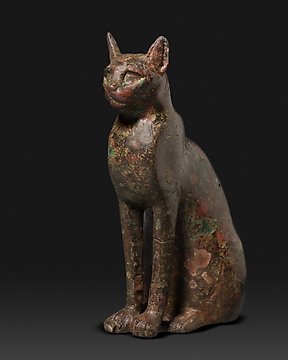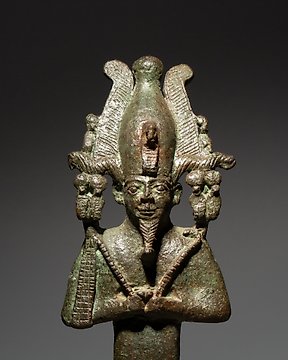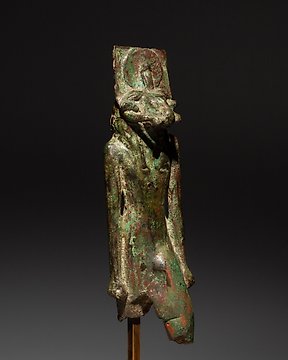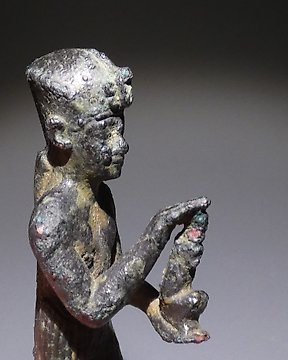Magnifique témoin du passé, envoyé avec tous les justificatifs, impeccable. Encore une fois très satisfait, un grand merci
Προβολή μετάφρασηςΑρχαία Αιγυπτιακή Μπρούντζος Ο Fine Hathor αντιμετωπίζει τον Mirror. Ύστερη Περίοδος, 664 - 332 π.Χ. Ύψος 28 cm. Ισπανική άδεια
Αρ. 84870767
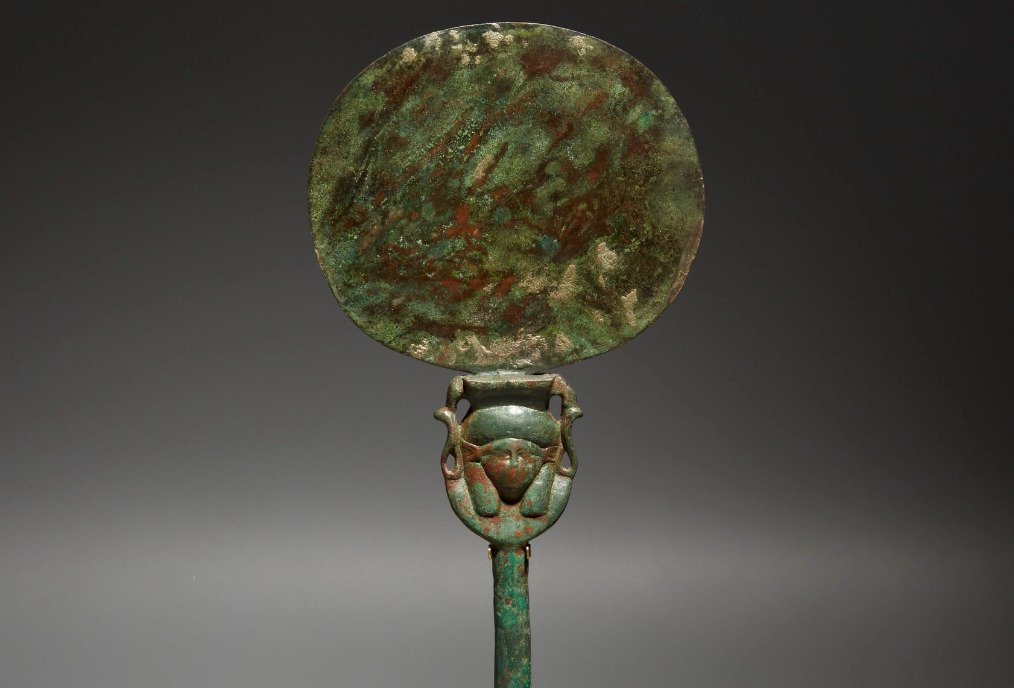
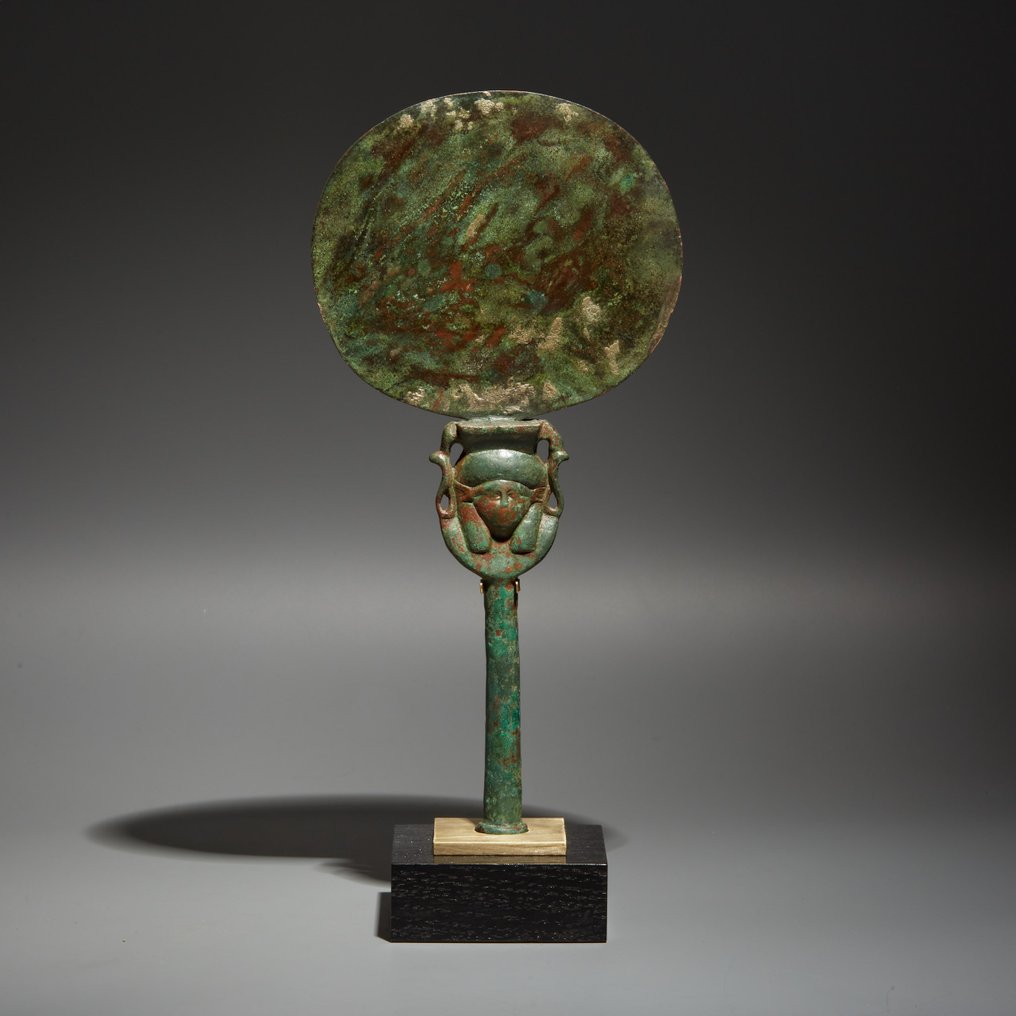
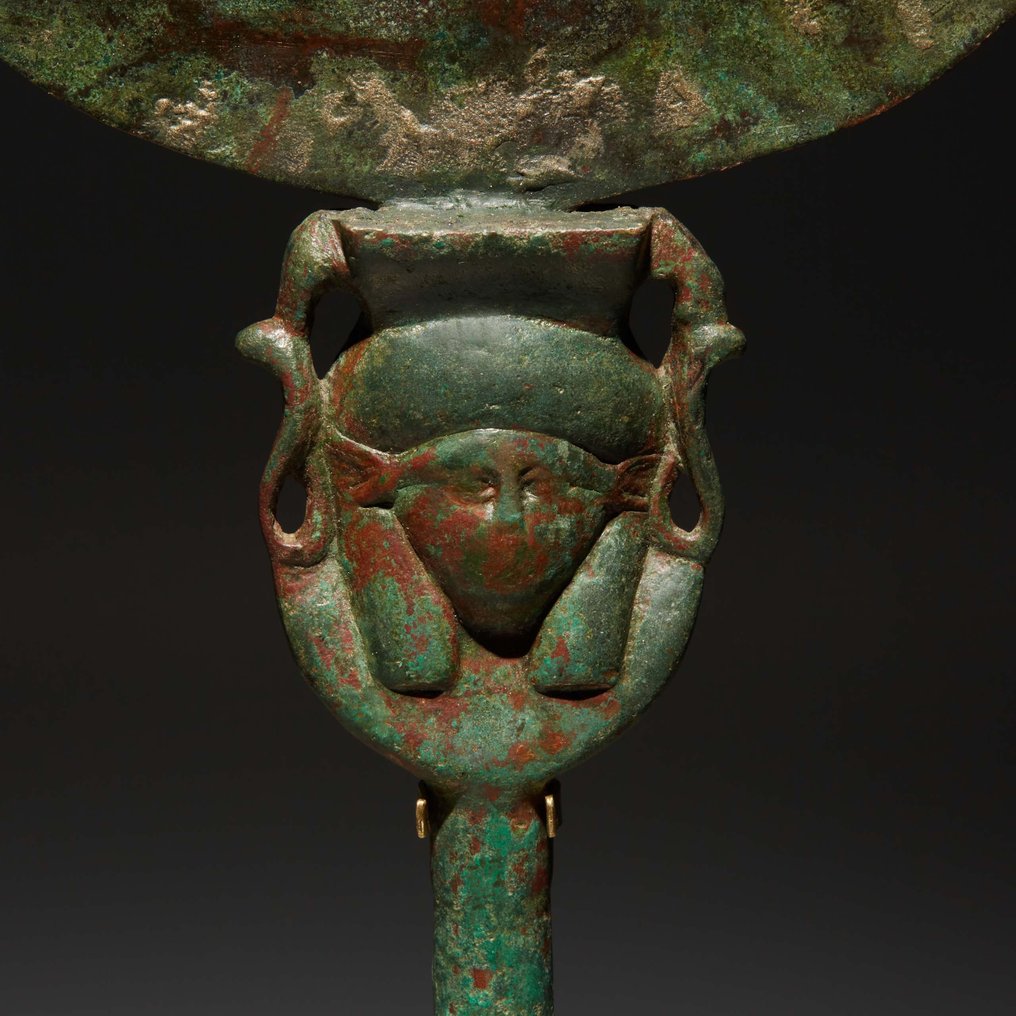
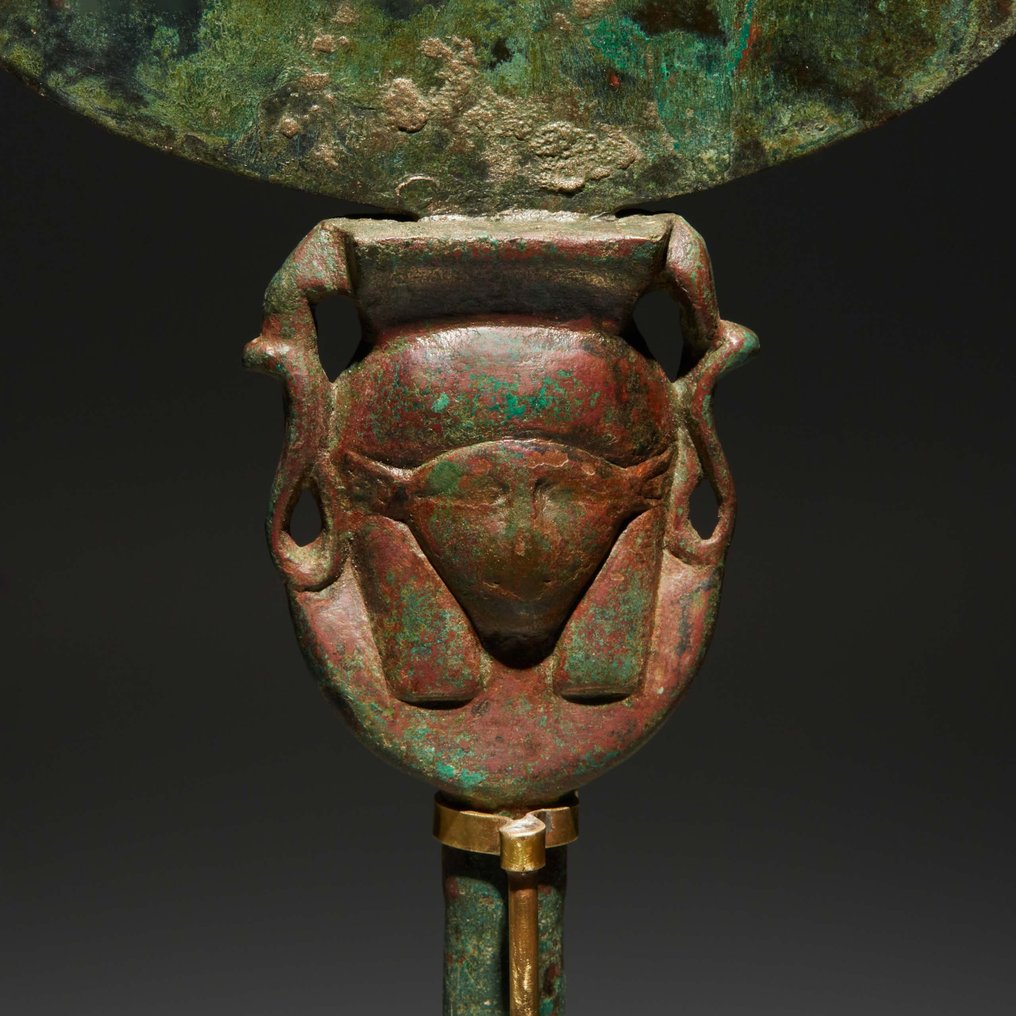
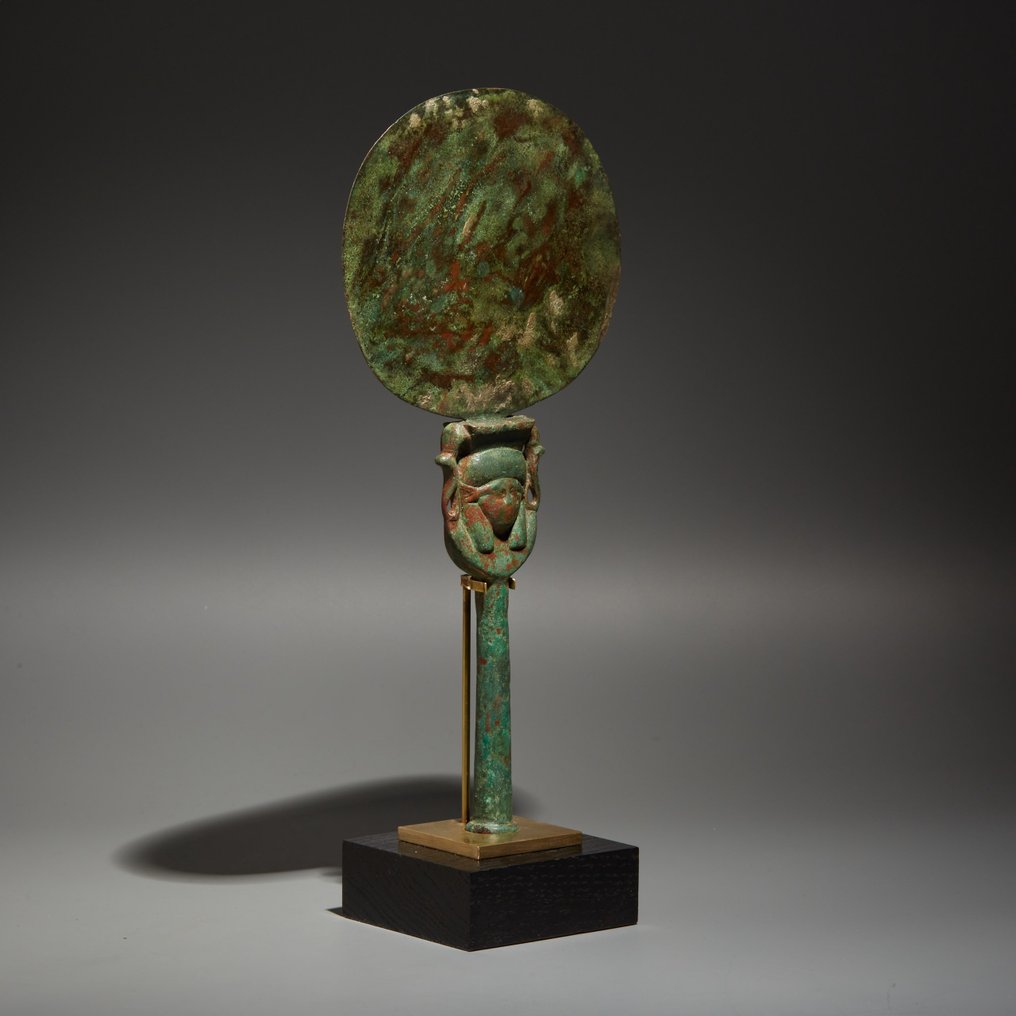
Mirror with hathor faces
- Important and Unique piece -
Ancient Egypt, Late Period, 664 - 332 BC.
Bronze.
Height 28 cm with out stand.
PROVENANCE: Private collection, Paris, France. Purchased from Maître Pajot, March 19, 1967, lot 11.
CONDITION: Good condition, it has wear on the surface of the face, especially on the nose.
DOCUMENTATION: Attached invoice from Maître Pajot, March 19, 1967, lot 11.
DESCRIPTION:
This beautiful example of an Egyptian mirror exhibits some interesting characteristics. Mirrors always occupied a dominant place among the so-called “dressing-table” accessories of Ancient Egypt. These Items, not only for women but also for men, were associated with the myths of the solar cycle.
The myth of the “distant goddess” tells how, the morning after the destruction of man which the lion goddess had carried out on the orders of the god Ra, she approached the flooded fields “to see her face beautifully reflected there”. Mirrors also referenced Shen ponds (which had the round form of the Shen ring) in the marshlands, where the goddess Hathor amused herself contemplating her own reflection, and thus forgetting in this manner her terrible desire to destroy humanity.
Egyptian mirrors, with their round shape referencing the solar disk, were objects known from the Middle Kingdom. The flat, round surface made of burnished metal enabled people to see their own countenance. Handles were generally in the form of the head of Hathor, or, as in this case, in a lotus or papyrus form. It was believed that by representing the goddess Hathor, goddess of love, an erotic value was given to the mirror. At the same time, the handle in the column form of the lotus flower or papyrus stem could be related to the meaning of its hieroglyphic, “green”, as a reference to rebirth. There are other connections that can be considered: the goddess Hathor is also associated with vegetation, papyrus marshes and stalks in particular, all elements that could be associated with the rebirth of the deceased. The shape of the mirror also evoked the image of the Ankh, the cross of life. In reflecting the image of the owner, it also produced the effect of vital regeneration so much desired by the ancient Egyptians. In sum, the mirror disk and the handle are both symbols associated with rebirth.
Hathor, in ancient Egyptian religion, goddess of the sky, of women, and of fertility and love. Hathor’s worship originated in early dynastic times (3rd millennium BCE). The name Hathor means “estate of Horus” and may not be her original name. Her principal animal form was that of a cow, and she was strongly associated with motherhood. Hathor was closely connected with the sun god Re of Heliopolis, whose “eye” or daughter she was said to be. In her cult centre at Dandarah in Upper Egypt, she was worshipped with Horus.
There were cults of Hathor in many towns in Egypt and also abroad, for she was the patroness of foreign parts and of many minerals won from the desert. In the Sinai turquoise mines, for example, she was called “Lady of Turquoise.” At Dayr al-Baḥrī, in the necropolis of Thebes, she became “Lady of the West” and patroness of the region of the dead. In the Late Period (1st millennium BCE), women aspired to be assimilated with Hathor in the next world, as men aspired to become Osiris. The Greeks identified Hathor with their Aphrodite.
Notes:
The seller guarantees that he acquired this piece according to all national and international laws related to the ownership of cultural property. Provenance statement seen by Catawiki.
The piece includes authenticity certificate.
The piece includes Spanish Export License (Passport for European Union) - If the piece is destined outside the European Union a substitution of the export permit should be requested. This process could take between 1 and 2 months.
Ιστορία πωλητή
Mirror with hathor faces
- Important and Unique piece -
Ancient Egypt, Late Period, 664 - 332 BC.
Bronze.
Height 28 cm with out stand.
PROVENANCE: Private collection, Paris, France. Purchased from Maître Pajot, March 19, 1967, lot 11.
CONDITION: Good condition, it has wear on the surface of the face, especially on the nose.
DOCUMENTATION: Attached invoice from Maître Pajot, March 19, 1967, lot 11.
DESCRIPTION:
This beautiful example of an Egyptian mirror exhibits some interesting characteristics. Mirrors always occupied a dominant place among the so-called “dressing-table” accessories of Ancient Egypt. These Items, not only for women but also for men, were associated with the myths of the solar cycle.
The myth of the “distant goddess” tells how, the morning after the destruction of man which the lion goddess had carried out on the orders of the god Ra, she approached the flooded fields “to see her face beautifully reflected there”. Mirrors also referenced Shen ponds (which had the round form of the Shen ring) in the marshlands, where the goddess Hathor amused herself contemplating her own reflection, and thus forgetting in this manner her terrible desire to destroy humanity.
Egyptian mirrors, with their round shape referencing the solar disk, were objects known from the Middle Kingdom. The flat, round surface made of burnished metal enabled people to see their own countenance. Handles were generally in the form of the head of Hathor, or, as in this case, in a lotus or papyrus form. It was believed that by representing the goddess Hathor, goddess of love, an erotic value was given to the mirror. At the same time, the handle in the column form of the lotus flower or papyrus stem could be related to the meaning of its hieroglyphic, “green”, as a reference to rebirth. There are other connections that can be considered: the goddess Hathor is also associated with vegetation, papyrus marshes and stalks in particular, all elements that could be associated with the rebirth of the deceased. The shape of the mirror also evoked the image of the Ankh, the cross of life. In reflecting the image of the owner, it also produced the effect of vital regeneration so much desired by the ancient Egyptians. In sum, the mirror disk and the handle are both symbols associated with rebirth.
Hathor, in ancient Egyptian religion, goddess of the sky, of women, and of fertility and love. Hathor’s worship originated in early dynastic times (3rd millennium BCE). The name Hathor means “estate of Horus” and may not be her original name. Her principal animal form was that of a cow, and she was strongly associated with motherhood. Hathor was closely connected with the sun god Re of Heliopolis, whose “eye” or daughter she was said to be. In her cult centre at Dandarah in Upper Egypt, she was worshipped with Horus.
There were cults of Hathor in many towns in Egypt and also abroad, for she was the patroness of foreign parts and of many minerals won from the desert. In the Sinai turquoise mines, for example, she was called “Lady of Turquoise.” At Dayr al-Baḥrī, in the necropolis of Thebes, she became “Lady of the West” and patroness of the region of the dead. In the Late Period (1st millennium BCE), women aspired to be assimilated with Hathor in the next world, as men aspired to become Osiris. The Greeks identified Hathor with their Aphrodite.
Notes:
The seller guarantees that he acquired this piece according to all national and international laws related to the ownership of cultural property. Provenance statement seen by Catawiki.
The piece includes authenticity certificate.
The piece includes Spanish Export License (Passport for European Union) - If the piece is destined outside the European Union a substitution of the export permit should be requested. This process could take between 1 and 2 months.
Ιστορία πωλητή
- 746
- 6
- 0
Thank you for the Special offer and the fast shipping of this excellent piece of art!
Προβολή μετάφρασηςvery good description of the object, very good price for this rare item,. Fast sending (has been at my place 2 days after buying!). Definitely would buy again.
Προβολή μετάφρασηςSehr schön
Προβολή μετάφρασηςAs described, perfect logistic
Προβολή μετάφρασηςgreat seller, everything came as should with certificate of authenticity
Προβολή μετάφρασηςExceptionally well packaged, description aligned with positing received
Προβολή μετάφρασηςReally precious, but without sound...
Προβολή μετάφρασηςPainting well packed and rapidly sent!
Προβολή μετάφρασηςsempre grande rapidità e professionalità
Προβολή μετάφρασηςparfait bien reçu, merci
Προβολή μετάφρασηςVery satisfied with the small Greek Lekythos. As always (we have already bought several items from Bagot), the object was wrapped and sent immediately and with the greatest care.
Προβολή μετάφρασηςPerfect, excellent condition, good packaging, the parcel arrived without any problems… all is perfect as usual. Thank you very much and wait for an other nice piece like this one. Gilles.
Προβολή μετάφρασης+++ Top vendeur professionnel comme d'habitude
Προβολή μετάφρασηςEmbora o custo de transporte esteja acima da média foi, realmente, muito bem executado e em embalagem cuidada. Expeditos e profissionais. Recomendo
Προβολή μετάφρασηςSnel en correct en goed verpakt verzonden
Προβολή μετάφρασηςoggetto bellissimo, fedele alla descrizione, venditore affidabile
Προβολή μετάφρασηςVery nice piece and fast delivery
Προβολή μετάφρασηςEverything ok, top seller! Thank you again!
Προβολή μετάφρασηςvery beautiful and fast shipping!thank you!
Προβολή μετάφρασηςExcelent, very good piece++++
Προβολή μετάφρασηςVendedor increíble muy buenos he comprado muchas veces todo perfecto. Muchas gracias
Προβολή μετάφρασηςpas de problème ; merci beaucoup
Προβολή μετάφρασηςtres rapide conforme hope next +++
Προβολή μετάφρασηςSehr schön! Vielen Dank!
Προβολή μετάφρασης- 746
- 6
- 0
Magnifique témoin du passé, envoyé avec tous les justificatifs, impeccable. Encore une fois très satisfait, un grand merci
Προβολή μετάφρασηςΑποποίηση ευθυνών
Ο πωλητής εγγυάται και μπορεί να αποδείξει ότι το αντικείμενο αποκτήθηκε νόμιμα. Ο πωλητής ενημερώθηκε από την Catawiki ότι έπρεπε να παράσχει τα δικαιολογητικά που απαιτούνται από τους νόμους και τους κανονισμούς στη χώρα διαμονής τους. Ο πωλητής εγγυάται και δικαιούται να πουλήσει/εξάγει αυτό το αντικείμενο. Ο πωλητής θα παρέχει στον αγοραστή όλες τις πληροφορίες προέλευσης που είναι γνωστές για το αντικείμενο. Ο πωλητής διασφαλίζει ότι οποιεσδήποτε απαραίτητες άδειες έχουν ήδη κανονιστεί /θα κανονιστεί. Ο πωλητής θα ενημερώσει αμέσως τον αγοραστή για τυχόν καθυστερήσεις στην απόκτηση τέτοιων αδειών.
Ο πωλητής εγγυάται και μπορεί να αποδείξει ότι το αντικείμενο αποκτήθηκε νόμιμα. Ο πωλητής ενημερώθηκε από την Catawiki ότι έπρεπε να παράσχει τα δικαιολογητικά που απαιτούνται από τους νόμους και τους κανονισμούς στη χώρα διαμονής τους. Ο πωλητής εγγυάται και δικαιούται να πουλήσει/εξάγει αυτό το αντικείμενο. Ο πωλητής θα παρέχει στον αγοραστή όλες τις πληροφορίες προέλευσης που είναι γνωστές για το αντικείμενο. Ο πωλητής διασφαλίζει ότι οποιεσδήποτε απαραίτητες άδειες έχουν ήδη κανονιστεί /θα κανονιστεί. Ο πωλητής θα ενημερώσει αμέσως τον αγοραστή για τυχόν καθυστερήσεις στην απόκτηση τέτοιων αδειών.
